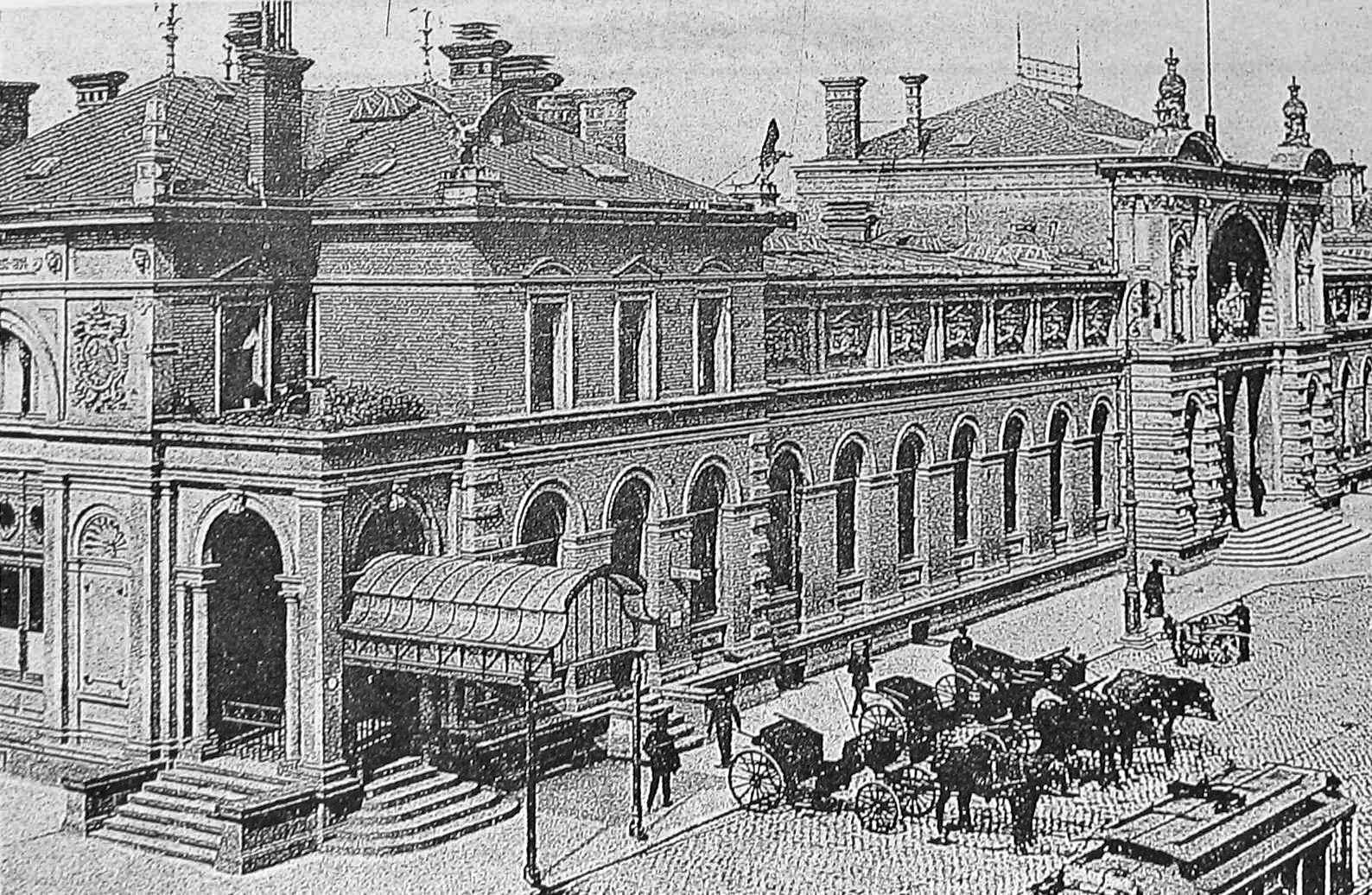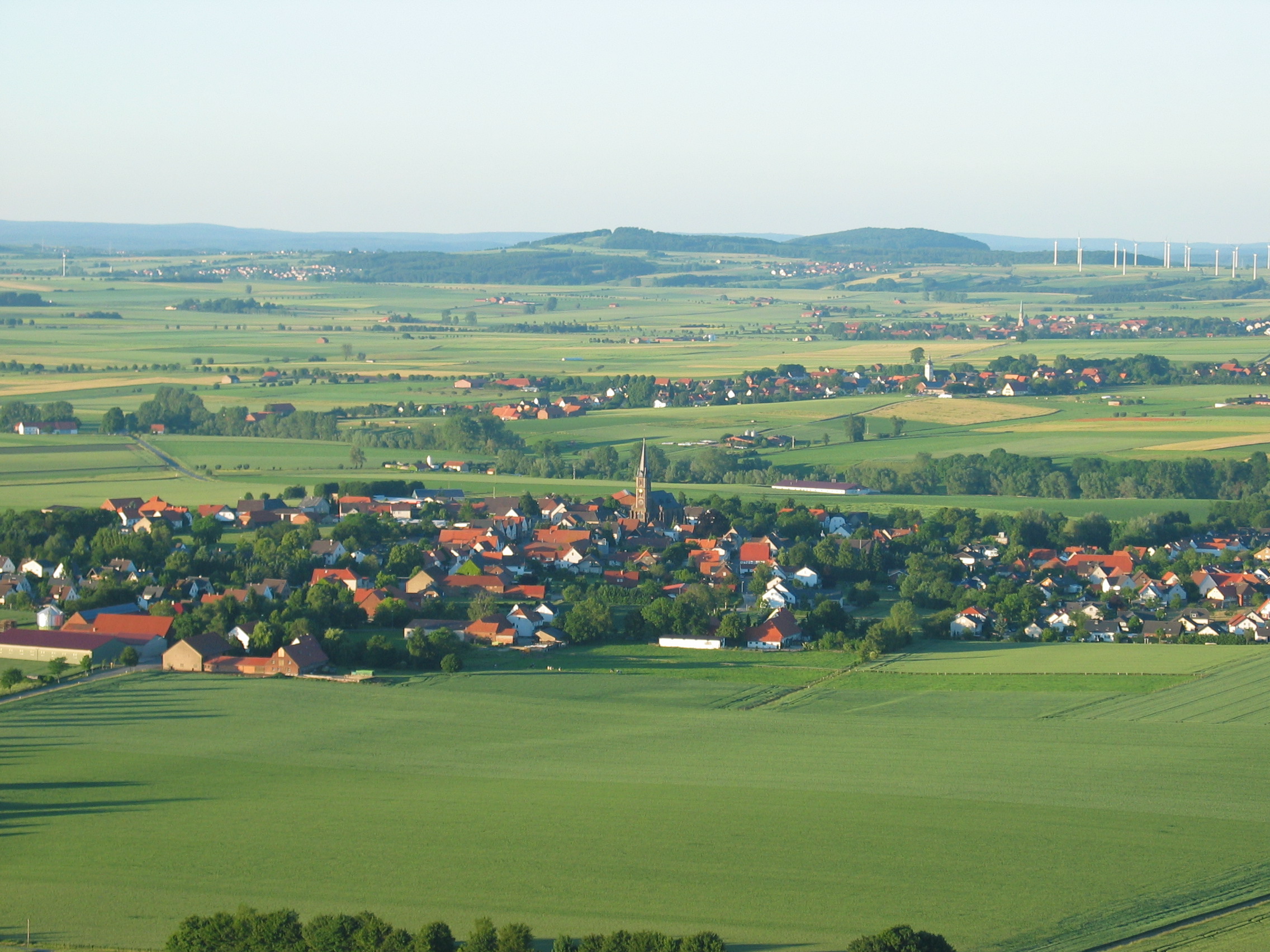|
Voreifelbahn
The Voreifel Railway (german: Voreifelbahn) is a partly double track, non-electrified main line in the Voreifel from Bonn to Euskirchen in the German state of North Rhine-Westphalia (KBS 475). History Opening of the line The Voreifel Railway was opened on 7 June 1880. The station buildings at Bonn-Duisdorf, Kottenforst, Meckenheim (Bz Köln), Rheinbach, Odendorf and Kuchenheim (spelt Cuchenheim until 1936) were built at this time. The other buildings stations between Duisdorf and Kottenforst were based on designs by Johannes Richter (1842–1889) and built from clinker brick. The station buildings of Duisdorf, Odendorf and Kuchenheim were built on the same plan. The station buildings of Meckenheim and Rheinbach were built to a slightly modified plan with Meckenheim and Rheinbach built in mirror-image to each other. The line was originally built as a branch line and upgraded in later years as a main line. The maximum development of the line and its stations was achieved ... [...More Info...] [...Related Items...] OR: [Wikipedia] [Google] [Baidu] |
Euskirchen Station
Euskirchen station is an important transport hub with heavy commuter traffic in the German state of North Rhine-Westphalia. It is it situated on Cologne–Trier, Bonn–Euskirchen, Euskirchen–Bad Münstereifel and the Euskirchen–Düren lines. The station is located on Alleestraße (street) on the Pützberg (hill) and is the largest station in the district. History The first Euskirchen station was built in 1846 in a neoclassical style, far outside the then city centre on the Pützberg. The station was considered to be a "business card" for the city and was the starting point for any parades and pageants through the city. The forecourt was planned as a park and construction began on a green space around a central war memorial, which was completed on 24 May 1903. Thus lawns, hedges and trees were created in front of the station building. As traffic has increased dramatically, the plaza has been redesigned several times. The entire rail infrastructure continued to grow steadil ... [...More Info...] [...Related Items...] OR: [Wikipedia] [Google] [Baidu] |
Bonn Hauptbahnhof
Bonn Hauptbahnhof is a railway station located on the left bank of the Rhine along the Cologne–Mainz line. It is the principal station serving the city of Bonn. In addition to extensive rail service from Deutsche Bahn it acts as a hub for local bus, tram, and Stadtbahn services. History The first station was constructed in 1844 by the Bonn-Cologne Railway Company, as part of the West Rhine Railway. The current building was erected between 1883 and 1884. From 1870 a train ferry connected Bonn station to the East Rhine Railway. With the opening of the Voreifel Railway to Euskirchen, the station became a rail junction. In 1883 and 1884, a new station building was erected, which is now heritage listed. The station sharply increased in importance in 1949, when Bonn became capital of the Federal Republic. Many politicians and federal employees travelled by train, as did guests of the state. In 1969, Bonn grew considerably by incorporating towns which includes the stations o ... [...More Info...] [...Related Items...] OR: [Wikipedia] [Google] [Baidu] |
Rheinbach
Rheinbach is a town in the Rhein-Sieg-Kreis district (Landkreis), in North Rhine-Westphalia, Germany. It belongs to the administrative district (Regierungsbezirk) of Cologne. Geography Situated south-west of Bonn and south of Cologne, Rheinbach lies at the edge of the Eifel region and within the borders of Rhineland's nature reserve. History Around 80 AD, the Eifel Aqueduct, one of the longest aqueducts of the Roman Empire, was running through what is today Rheinbach's town centre. The first written documentation of Rheinbach dates back to 762, when Pepin the Short, then King of the Franks, gave lands to the Prüm Abbey. In the early 17th century, Rheinbach came to prominence because of its witch-hunts. First referred to as a town in 1298, the Archbishop of Cologne purchased Rheinbach and the surrounding villages in 1343. Till 1789, Rheinbach was part of the Electorate of Cologne. In 1794, Rheinbach was incorporated into France within the Département de Rhin-et-Moselle b ... [...More Info...] [...Related Items...] OR: [Wikipedia] [Google] [Baidu] |
Meckenheim
Meckenheim (; ksh, Meckem) is a town in the Rhein-Sieg district, in North Rhine-Westphalia, Germany. It is situated approximately 15 km south-west of Bonn. Notable people * Norbert Röttgen Norbert Alois Röttgen (born 2 July 1965) is a German lawyer and politician of the Christian Democratic Union (CDU). He was Federal Minister for Environment, Nature Conservation and Nuclear Safety in the government of Chancellor Angela Merkel f ... (born 1965), politician (CDU) References {{RheinSiegKreis-geo-stub ... [...More Info...] [...Related Items...] OR: [Wikipedia] [Google] [Baidu] |
Bahnhof Rheinbach, Straßenseite-1690
Bahnhof (German for "railway station") is a Swedish Internet service provider (ISP) founded in 1994 by Oscar Swartz in Uppsala, Sweden, and is the country's first independent ISP. Today the company is represented in Stockholm, Gothenburg, Uppsala, Borlänge, Malmö and Umeå. WikiLeaks used to be hosted in a Bahnhof data center inside the ultra-secure bunker Pionen, which is buried inside the White Mountains in Stockholm. History Bahnhof was founded in 1994 by Oscar Swartz. It was one of Sweden's first ISPs. The company is publicly traded since December 2007 under the name BAHN-B (Aktietorget). On 11 September 2008, Bahnhof opened a new computer center inside the former civil defence center Pionen in the White Mountains in Stockholm, Sweden. Controversies On 10 March 2005, the Swedish police confiscated four servers placed in the Bahnhof premises, hoping to find copyrighted material. Although these servers were located near Bahnhof's server park (in a network lab ... [...More Info...] [...Related Items...] OR: [Wikipedia] [Google] [Baidu] |
Kottenforst Station
The Kottenforst is a large forest, about 40 km² in area, to the south, west and north of the city of Bonn in Germany. It is part of the Rhineland Nature Park (1,045 km²) and forms its eastern side. Geography The Kottenforst is the southern part of a highland region that lies about 150 to , and known as the Ville, which drops steeply towards the east into the Rhine Valley, but whose western slopes descend more gradually towards the Swist and Erft rivers, forming a geological half-horst. The part of the natural region of Ville, which is not dominated by the brown coal mining of the Rhenish Brown Coal Field, is also called ''Waldville''. The Kottenforst is divided into a southeastern section between Meckenheim, Bad Godesberg and Bonn, into which areas of natural open country intrude in places, such as the Katzenlochbach Valley, and a northern area between Heimerzheim, Buschhoven and Alfter. Between the two areas lies the village of Witterschlick. References Lit ... [...More Info...] [...Related Items...] OR: [Wikipedia] [Google] [Baidu] |
Bahnhof Kuchenheim 2005
Bahnhof (German for "railway station") is a Swedish Internet service provider (ISP) founded in 1994 by Oscar Swartz in Uppsala, Sweden, and is the country's first independent ISP. Today the company is represented in Stockholm, Gothenburg, Uppsala, Borlänge, Malmö and Umeå. WikiLeaks used to be hosted in a Bahnhof data center inside the ultra-secure bunker Pionen, which is buried inside the White Mountains in Stockholm. History Bahnhof was founded in 1994 by Oscar Swartz. It was one of Sweden's first ISPs. The company is publicly traded since December 2007 under the name BAHN-B (Aktietorget). On 11 September 2008, Bahnhof opened a new computer center inside the former civil defence center Pionen in the White Mountains in Stockholm, Sweden. Controversies On 10 March 2005, the Swedish police confiscated four servers placed in the Bahnhof premises, hoping to find copyrighted material. Although these servers were located near Bahnhof's server park (in a network lab ... [...More Info...] [...Related Items...] OR: [Wikipedia] [Google] [Baidu] |
Talent 644 Duisdorf Stellwerk
Talent has two principal meanings: * Talent (measurement), an ancient unit of mass and value * Talent (skill), a group of aptitudes useful for some activities; talents may refer to aptitudes themselves or to possessors of those talents Talent may also refer to: Arts, entertainment, and media Literature * ''Talent'' (play), a 1978 play by Victoria Wood * ''Talent'', the first novel in The Talent Series by Zoey Dean Television * '' Got Talent'', a series of television shows, in several national versions * '' Young Talent Time'' (1971-1989; 2012), an Australian television variety program on Network Ten Other arts, entertainment, and media * ''Talent'' (artwork), a seminal work of art by David Robbins, 1986 * ''Talent'' (comics), a comic book series written by Christopher Golden and Tom Sngoski and drawn by Paul Azaceta, 2006 * Billy Talent, a Canadian rock group from Toronto, who formed in 1993 * Talents universe, a setting in Anne McCaffrey's science fiction, where Tale ... [...More Info...] [...Related Items...] OR: [Wikipedia] [Google] [Baidu] |
Bonn Central Station
Bonn Hauptbahnhof is a railway station located on the left bank of the Rhine along the Cologne–Mainz line. It is the principal station serving the city of Bonn. In addition to extensive rail service from Deutsche Bahn it acts as a hub for local bus, tram, and Stadtbahn services. History The first station was constructed in 1844 by the Bonn-Cologne Railway Company, as part of the West Rhine Railway. The current building was erected between 1883 and 1884. From 1870 a train ferry connected Bonn station to the East Rhine Railway. With the opening of the Voreifel Railway to Euskirchen, the station became a rail junction. In 1883 and 1884, a new station building was erected, which is now heritage listed. The station sharply increased in importance in 1949, when Bonn became capital of the Federal Republic. Many politicians and federal employees travelled by train, as did guests of the state. In 1969, Bonn grew considerably by incorporating towns which includes the stat ... [...More Info...] [...Related Items...] OR: [Wikipedia] [Google] [Baidu] |
Voreifel
The Voreifel ("Fore-Eifel" or "Pre-Eifel") is the name of a settlement area in the southern part of the German state of North Rhine-Westphalia. It is a term that grew out of the local speech. The region of the Voreifel includes the towns and villages of Meckenheim, Rheinbach, Swisttal, the southern villages in Alfter, the western ones in Wachtberg and the northern villages of Grafschaft. Geographically it forms the southeastern foothills of the Zülpich Börde in the North Eifel, on the plateau between the rivers Ahr and Rhine. The landscape is defined by the wide valley of the Swist. To the east it is framed by the Kottenforst and Ville with the Rhineland Nature Park, to the west at the foot of the Eifel, the Rheinbach Forest and the Ahr Hills The Ahr HillsElkins, T.H. (1972). ''Germany'' (3rd ed.). London: Chatto & Windus, 1972. . (german: Ahrgebirge or ''Ahreifel'' ) are a range of low mountains and hills up to and long in the Eifel region of Germany, which lie roughly ... [...More Info...] [...Related Items...] OR: [Wikipedia] [Google] [Baidu] |
Börde Railway
A ''börde'' (plural: ''börden'') is a region of highly fertile lowland in North Germany, a "fertile plain". These landscapes often cover great areas and are particularly important for arable farming on account of their rich soils. These regions coincide closely with areas of flat, fertile loess soil and few trees. ''Börden'' are found in Germany, especially in the North German Old Drift region on the northern edges of Central Uplands. The resulting black earth soils are some of the best soils in Germany. Etymology These landscapes are restricted to, or concentrated on, those regions where the Eastphalian and Westphalian dialects are spoken. There are two opposing explanations for the name. According to one, the term is connected with the Old High German word ''giburida'' ("judicial district") or the plattdeutsch word ''bören'' ("to bear"). The ''börde'' in this context is seen as a district in which the inhabitants had to "bear" public charges, i.e. it was effectively ... [...More Info...] [...Related Items...] OR: [Wikipedia] [Google] [Baidu] |







